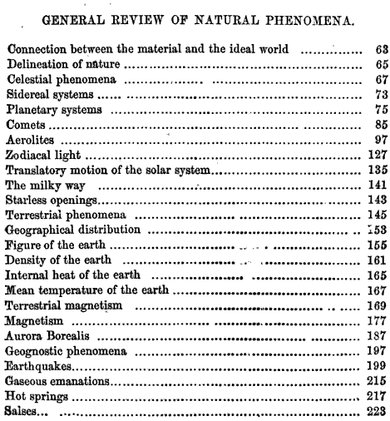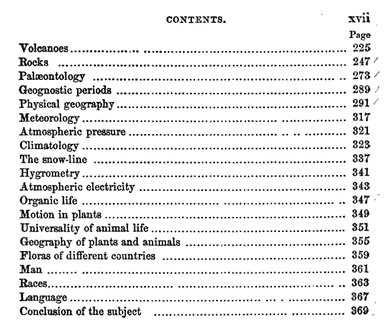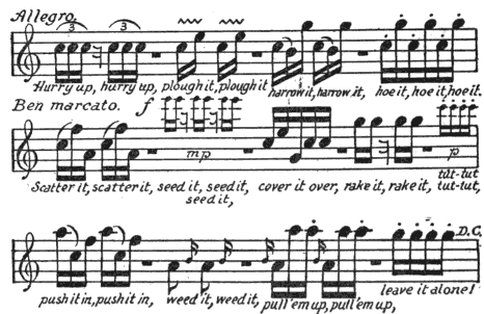Literary Feasts
Literature and music come closest of all the arts to matching the creative opulence and diversity of nature. Just as the 117 elements in the Periodic Table are the raw material for all physical matter, the 26 letters in our alphabet create a spoken/written universe of virtually endless variety. Putting letters and words into new order is an organic profusion, wild, fluid, and unstoppable, not learned so much as tapped into, as if we have discovered language by driving a pipe into an artesian well. Writers who tap into that aquifer take for granted that readers will accept their profuse output — not just accept it, but relish it, snapping up words like plump berries we pop into our mouths, bump against our teeth, roll across our tongues, and bite to release bursts of nectar. Certain sentences and paragraphs are so sensuous that just reading them is never enough. No wonder we say of a favorite book that we “devoured” it, or “ate it up,” or found it “delicious.”
So it should not be surprising that literary descriptions of food and feasts have so often inspired feasts of language. As a reader, I want to enjoy every bite – feel the words on my tongue, taste combinations so unusual and surprising that they are like new classes of flavors. Here are a few offerings to dine upon:
From Winter’s Tale by Mark Helprin, (some of the foods the character Harry Penn holds dear to his heart, and which the cook, Boonya, loves to prepare):
“Oh, durbo cheese stuffed with trefoil, camminog, meat of the vibola, roast bandribrolog seeds, satcha oil hotcakes, young Dollit chicken in Sauce Donald, giant broom berries, crème de la berkish tollick, serbine of vellit, pickled teetingle, chocolate wall hermans, trail lemons, Rhinebeck hot pots with fresh armando, parrifoo of aminule, vanilla lens arrows, fertile beaties, archbestial bloodwurst, Turkish calendar cake, fried berlac chippings, cocktail of ballroom pig, vellum cream cake, undercurrents, crisp of tough boxer lamb, sugared action terries, merry rubint nuts, and rasta blood-chicken with sauce Arnold.
“For each of these products of Boonya’s crazed imagination, she had a recipe. Christiana looked on in wonder as Boonya pantomimed the preparation of a fresh teetingle, or the proper way to cut vanilla lens arrows. “Always flour the marble before you put down an uncooked lens arrow. Sprinkle the vanilla. Cut it fast!” she screamed, her fat sausagelike arms flailing about the medicine ball. ‘Otherwise, it sticks. Sticky little bastards, lens arrows. Did your mother ever teach you how to properly bone a good serbine of vellit?’”
From James Joyce’s Ulysses (the “Cyclops” chapter):
“Thither the extremely large wains bring foison of the fields, flaskets of cauliflowers, floats of spinach, pineapple chunks, Rangoon beans, strikes of tomatoes, drums of figs, drills of Swedes, spherical potatoes and tallies of iridescent kale, York and Savoy, and trays of onions, pearls of the earth, and punnets of mushrooms and custard marrows and fat vetches and bere and rape and red green yellow brown russet sweet big bitter ripe pomellated apples and chips of strawberries and sieves of gooseberries, pulpy and pelurious, and strawberries fit for the princes and raspberries from their canes.”
From Donald Barthelme’s story “The Zombies,” in Great Days (in which a zombie, visiting the only village for miles around that is willing to sell wives to zombies, tries to win a bride for himself by describing the copious breakfasts served in zombie homes):
“Monday!” he says, “Sliced oranges boiled grits fried croakers potato croquettes radishes watercress broiled spring chicken batter cakes butter syrup and café au lait! Tuesday! Grapes hominy broiled tenderloin of trout steak French-fried potatoes celery fresh rolls butter and café au lait! Wednesday! Iced figs Wheatena porgies with sauce tartare potato chips broiled ham scrambled eggs French toast and café au lait! Thursday! Bananas with cream oatmeal broiled patassas fried liver with bacon poached eggs on toast waffles with syrup and café au lait! Friday! Strawberries with cream broiled oysters on toast celery friend perch lyonnaise potatoes cornbread with syrup and café au lait! Saturday! Muskmelon on ice grits stewed tripe herb omelette olives snipe on toast flannel cakes with syrup and café au lait!” The zombie draws a long breath. “Sunday!” he says. “Peaches with cream cracked wheat with milk broiled Spanish mackerel with sauce maitre d’hotel creamed chicken beaten biscuits broiled woodcock on English muffin rice cakes potatoes a la duchess eggs Benedict oysters on the half shell broiled lamb chops pound cake with syrup and café au lait! And imported champagne!”
From Mark Twain’s Autobiography of Mark Twain, The Complete and Authoritative Edition, Volume 1 (remembering meals when he was a boy in the 1840s):
“It was a heavenly place for a boy, that farm of my uncle John’s. The house was a double log one, with a spacious floor (roofed in) connecting it with the kitchen. In the summer the table was set in the middle of that shady and breezy floor, and the sumptuous meals – well, it makes me cry to think of them. Fried chicken; roast pig; wild and tame turkeys, ducks and geese; venison just killed; squirrels, rabbits, pheasants, partridges, prairie chickens; homemade bacon and ham; hot biscuits, hot batter-cakes, hot buckwheat cakes, hot “wheatbread,” hot rolls, hot corn pone; fresh corn boiled on the ear, succotash, butter-beans, string beans, tomatoes, peas, Irish potatoes, sweet potatoes; buttermilk, sweet milk, “clabber;” watermelons, musk melons, cantaloupes — all fresh from the garden — apple pie, peach pie, pumpkin pie, apple dumplings, peach cobbler — I can’t remember the rest. The way that certain things were cooked was perhaps the main splendor — particularly a certain few of the dishes. For instance, the corn bread, the hot biscuits and wheatbread and the fried chicken. These things have never been properly cooked in the North — in fact, no one there is able to learn the art, so far as my experience goes. The North thinks it knows how to make corn bread, but this is gross superstition. Perhaps no bread in the world is quite as good as Southern corn bread, and perhaps no bread in the world is quite so bad as the Northern imitation of it.
Do you know of other copious breakfasts, lunches, dinners, or snacks in literature? Please let me know. I’m hungry!





 Least Heat-Moon wondered if his search for the true identity of Chase County, Kansas might be more effective if he were to “just gather up items like creek pebbles into a bag and then let them tumble into their own pattern?” The problem – how to make words stand in for concrete, physical things and actual, living beings – has always bedeviled writers. Agee and Least Heat-Moon (and Joyce, of course) rely on the mud-against-the-wall tactic of inventorying humans, animals, plants, rocks, soil, houses, barns, waterways, the scent of meadows and the stink of barnyards, the words uttered by men, women, and children (and the manner in which they utter them), distillations and catalogs of seemingly every word previously written about them, notices on town halls and in tavern toilets, the authors’ direct perceptions, wishes, intentions, and prejudices, all in efforts to get at the unique nature of a place and its inhabitants. Least Heat-Moon, who describes his perception of place as “part of a deep landscape in slow rotation at the center of a sphere and radiating infinite lines in an indefinite number of directions,” subtitles his book “a deep map,” and sets out to embrace time as well as place and present a multi-dimensional and non-lineal portrait of his Kansas county. He speaks for everyone who has wrestled with this challenge when he writes, “If a traveler can’t penetrate a place, maybe it can penetrate him.”
Least Heat-Moon wondered if his search for the true identity of Chase County, Kansas might be more effective if he were to “just gather up items like creek pebbles into a bag and then let them tumble into their own pattern?” The problem – how to make words stand in for concrete, physical things and actual, living beings – has always bedeviled writers. Agee and Least Heat-Moon (and Joyce, of course) rely on the mud-against-the-wall tactic of inventorying humans, animals, plants, rocks, soil, houses, barns, waterways, the scent of meadows and the stink of barnyards, the words uttered by men, women, and children (and the manner in which they utter them), distillations and catalogs of seemingly every word previously written about them, notices on town halls and in tavern toilets, the authors’ direct perceptions, wishes, intentions, and prejudices, all in efforts to get at the unique nature of a place and its inhabitants. Least Heat-Moon, who describes his perception of place as “part of a deep landscape in slow rotation at the center of a sphere and radiating infinite lines in an indefinite number of directions,” subtitles his book “a deep map,” and sets out to embrace time as well as place and present a multi-dimensional and non-lineal portrait of his Kansas county. He speaks for everyone who has wrestled with this challenge when he writes, “If a traveler can’t penetrate a place, maybe it can penetrate him.”
4 Replies